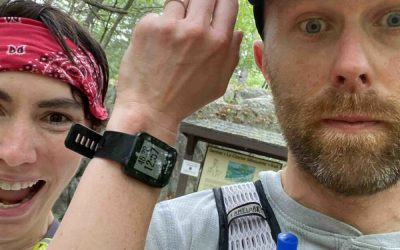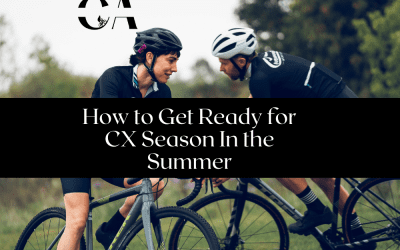When designing training plans or working with athletes on their bike skills and movement, I try to think about the environment or ‘ecology’ of a workout and how I can help guide an athlete to adjust their environment to get the adaptation or movement skill they require. You could manipulate the workout environment with bike choice, terrain choice, time of day and by who you train with (to name a few).
The last one might catch you a bit off guard. Training with people? But how will you do those super specific intervals that you downloaded to your bike computer?
Many, if not most, endurance athletes spend a significant time training alone. Training alone is likely how they started endurance riding and racing. The ability to be alone is also likely beneficial for success in endurance sports where you need to be ready to work hard on your own for extended periods of time. But training alone should not be your only training state. Beyond intensity and volume is a whole slew of training characteristics that can have an equal or greater influence on the skills you develop and the success you have in races.
Here’s why it’s important that some—not all!—of your rides or runs should be done with other people:
Learning How to Handle Unsteady Pacing
Training alone lets you ride at your own pace, but racing is generally dictated by an (often irrational) group of riders. This group will surge and slow at different times and also let you draft (even offroad). While there are many times that a steady ride at low intensity is ideal, there are also gains to be had from the undulating (and even irrational) paces seen in a group rides.
Pack Skills
Training alone means less to worry about, but in races you need to be comfortable with people around you. Especially as you move up in the standings, there is more skill needed to race around people. The people are harder to drop and are more motivated to stay together working towards the finish. This is an element that I only appreciated later in my career. Even in mountain bike racing, there is the start, which includes a group that rides very aggressively, and if you are not familiar with this situation, you cannot thrive. Gravel races will have small groups that form and work together (or not) and road racing, Gran Fondos and group rides are contingent on you being comfortable in the group. I have had several very fit clients over the year who resisted doing skill work (learning to draft) and who kept getting dropped from group rides they should have been able to lead based on fitness.
Social Skills
While you will work on your ability to talk to people and that’s great, I also think about the difference between doing a hard ride (technical or just very hard physically) solo or with other people. Working on skills alone feels more peaceful and less stressful because you aren’t worried about getting dropped or having to put a foot down or even having to walk through a section. But when you are riding with someone, they are going to provide you with more information about the trail around you and also create a social comparison, which is nerve-wracking, but is something that can be turned into motivation and that needs to be conquered to succeed on race day.
READ MORE: Even Superheroes Have Imposter Syndrome
Eating with Friends
Eating when you are alone might be easier and, in all honesty, it can be difficult to eat around other people. This might simply be a technique-based issue—it’s harder to grab bars, gels or bottles when trying to stay behind someone or chat—or it might be a mental block. Some athletes avoid eating around others because they fear of being judged for eating the wrong food or eating too much food. I have been there and still struggle with this, but if there is one simple way to mess up your training, it is never eating on hard/challenging or long rides. You can get away with it and ‘survive,’ but if you want to thrive (and get faster!), then you need to eat on your workouts. I hesitated to include this one but I think it’s something we need to talk about. It is good to fuel your workouts and important to eat what you need to eat. Functionally, it is also just harder to remember to eat and can be scary to pull food out of pockets when in a group, so practice this in training! It will pay off big time on race day.
Mix it Up
Variety is important for fitness, skills and motivation. If you have tried riding with a friend or a new group, you have likely found that they do some things slightly different than you do. Your friend might ride out of town a different way or go up a hill you usually go down or use a different technique to clear a log. Learning new routes, skills or strategies makes you better and freshens up your routine. You don’t need to do it their way completely, but its ok to ‘steal’ some of their better ideas or at least let their way provide a novel stimulus for you.
If you want to go far, go together
This is part of an old saying that has a lot truth. As I get older, I find going longer is hard and one way to get myself to do the volume I need is to recruit friends who are already doing long training, or I aim to ride before meeting friends. This might be one of my best tricks actually: I warmup, do some interval work and then meet friends and often ride home solo as well—this is great if you’re on the fitter side of your friend group. Start slow with this one, but I think this is a fun way to get time with friends and also learn the power of riding with other people.
Want more advice on riding with friends? Check out our book, Becoming A Consummate Athlete, right here:






